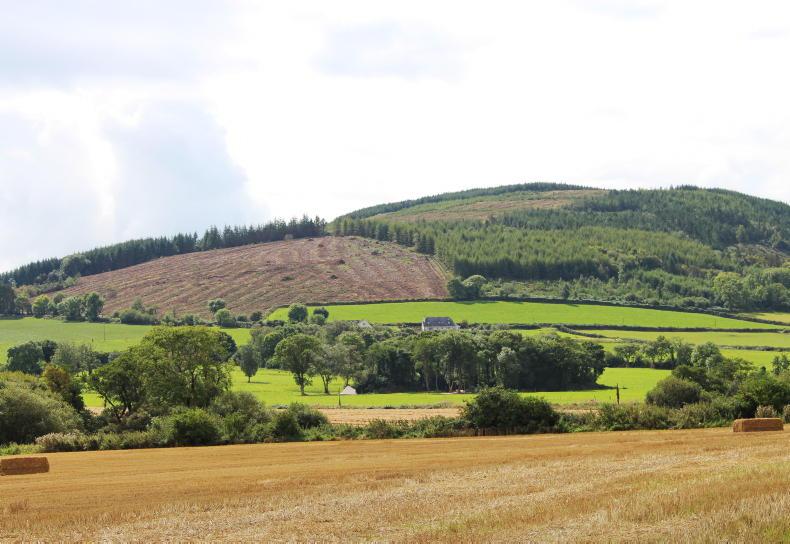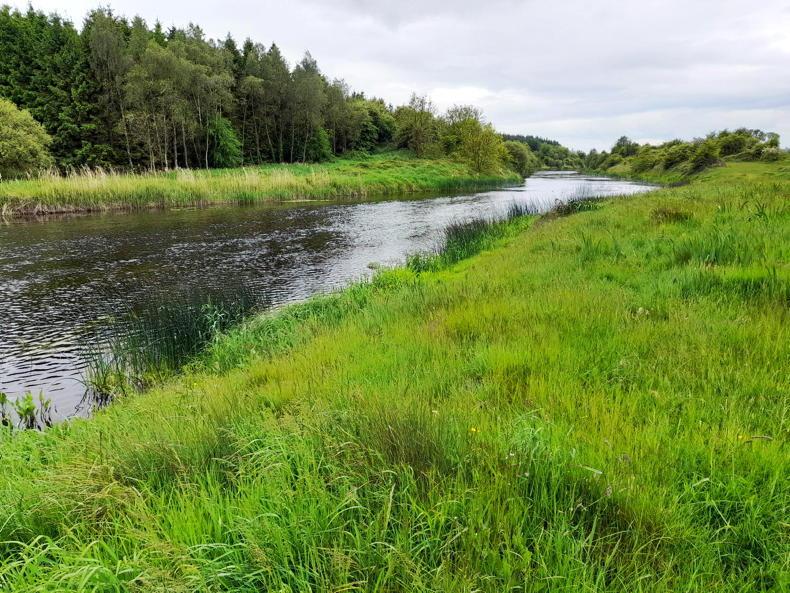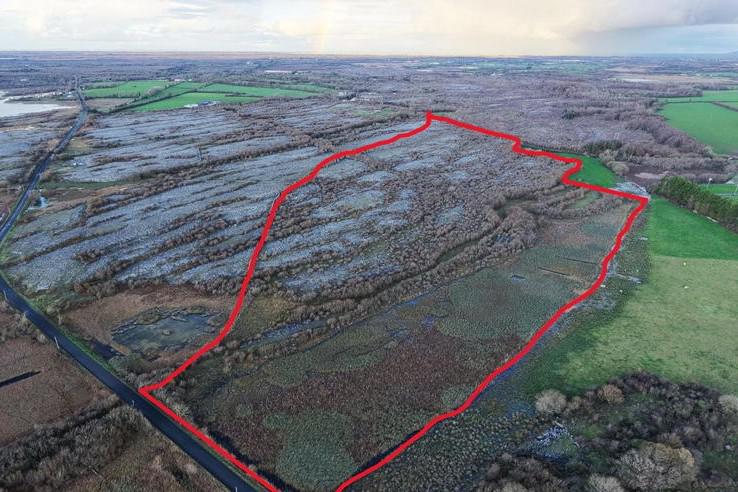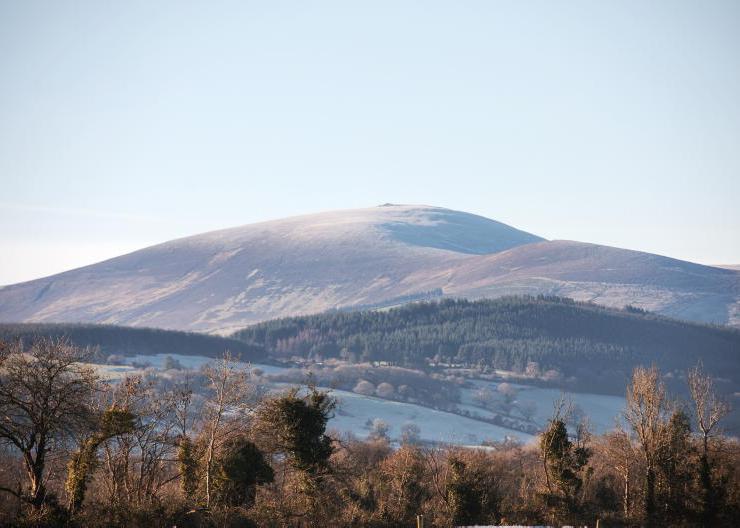"Afforestation is the single largest land-based climate change mitigation measure available to Ireland" – Climate Action Plan, 2021
You need to drill deep into the Climate Action Plan to find the above statement, but it’s one of many that emphasises the importance of forestry in delivering climate change goals.
“We will afforest in pursuit of commercial, climate, water and biodiversity objectives, both through planting and natural regeneration,” the plan adds as a measure “to provide opportunities to increase carbon stores”.
While the plan sees sustainably managed forests as a “net absorber of carbon,” it differs from previous climate plans and strategies. It goes beyond the forest to illustrate the role of wood and wood-based products as “a sustainable substitute for conventional carbon-heavy construction products, such as concrete, brick and steel”.
Acknowledging the dual benefits of forestry – carbon sequestration in the forest and carbon storage in wood usage – is central in decarbonising the economy. This duality should pave the way to introduce an Irish carbon code which would incentivise farmers to switch some of their land to forestry.
For all its positivity on the role of forestry in climate change mitigation, the climate plan provides no planting target to achieve net zero by 2050.
The findings of a preliminary report by the Society of Irish Foresters (SIF) maintain the Climate Action Plan is extremely disappointing in terms of innovative measures to increase the current levels of afforestation.
“It is a business as usual approach, lacking in imagination, detail and real commitment,” it states.
“The policy to penalise the source of emissions – emitters – and fail to reward carbon sequesters represents no change.”
Future afforestation
It points to past forest policy and afforestation schemes, which have failed to learn from the mistakes that have led to the current record low afforestation.
“Business as usual is not an option,” says Pat O’Sullivan, SIF technical director.
“What is needed is a new and innovative approach that actually incentivises farmers and other landowners to afforest part of their land while addressing issues such as the barriers to afforestation in future schemes.”
What is proposed in the report is an afforestation scheme that will leverage the carbon value sequestered by forests and use this value to reward and incentivise farmers and landowners to undertake afforestation.
Up until now, “the State has quietly recorded the carbon sequestered through afforestation in its national carbon accounting, while at the same time giving no reward to forest owners,” maintains the report.
“This is stealing by stealth and should cease,” it flatly states. The report outlines key features of a new carbon based afforestation scheme as follows:
Recognise that carbon sequestration by forests has a value.Provide an additional carbon income to forest owners, which will continue years after the premium payments have ceased.Provide participants with either an adjusted market value for the number of carbon credits issued or be free to sell their credits into the voluntary carbon market.Provide participants with improved grant and premium payments in line with the current afforestation scheme.Eligibility confined to new planting on mineral soils.The scheme and carbon assessment to be subject to third party independent verification and validation.Forest carbon code (FCC)
A critical first step is to establish an FCC for Ireland along the lines of the Woodland Carbon Code (WCC) in the UK but tailored to meet the needs and demographics of the Irish market.
The WCC is the quality assurance standard for woodland creation projects in the UK, and generates independently verified carbon units.
Backed by the UK government, the forest industry and carbon market experts, the WCC is unique in providing woodland carbon units in the UK.
The FCC, in addition to setting the quality assurance standard for forest carbon, would provide the tools for project registration, carbon prediction, carbon measurement and a carbon register.
It would also have a trading platform allowing registered participants to sell their carbon to the State at a market adjusted value.
Alternatively, owners could sell their carbon into the voluntary market either through an alternative trading platform or directly. Compliance with the FCC is the key to obtaining value for the carbon sequestered.
The carbon value per hectare planted is related to a combination of soil type, productivity, species, rotation length and management regime.
Longer rotations, no thinning and continuous cover forestry (CCF) facilitate higher levels of carbon sequestration. For example, a Grant and Premium Category (GPC 3) Sitka spruce-alder crop over a 40-year rotation results in the sequestration and permanent removal of 309 tonnes of CO2.
The rate of sequestration is slow initially and then increases peaking at the point of maximum current volume increment of the crop.
Some of this carbon would be held in reserve as a buffer against the possible impact of disease or windthrow.
Typically, the sale of carbon is spread over the rotation and owners would have the option to sell carbon as pending issuance units (PIUs) before the carbon is actually sequestered or as forest carbon units (FCUs) when the carbon has been sequestered with PIUs attracting a discount in value.
The value for forest carbon is difficult to estimate and is very much dependent on its “pedigree” ie compliance or non-compliance with any one of a number of voluntary standards.
For illustrative purposes, the SIF report uses the Irish Government shadow price for carbon for non-European Trading Scheme (ETS) sectors for 2020 which is €32/t. This gives a potential value of the carbon sequestered as €7,910/ha having allowed for a buffer of 20%.
There will be audit costs for verification and validation of the carbon sequestered but these can be reduced through collaboration between owners.
Carbon values of this order are more than sufficient to incentivise farmers and landowners to afforest areas of the order of 10,000ha to 15,000ha per annum.
The aim of the carbon afforestation scheme is not to displace agricultural production but to integrate carbon based afforestation within the farm enterprise. However, where livestock numbers decrease, there is a further benefit in the reduction of livestock emissions.
Promotion
The SIF report recommends that promotion be carried out by an independent Forestry Development Agency (FDA). Forestry is the only natural resource without the support of such a statutory body unlike food (Bord Bia), sea fisheries (BIM), environment (EPA) and renewable energy (SEI).
Five steps: achieving a
carbon afforestation model
The report acknowledges the work of Project Woodland, which should proceed to reform the forestry licence approval process. Separately, the SIF report outlines five steps in creating a forest carbon model:
1 Develop the FCC standard for Ireland.
2 Develop an FCC website complete with carbon tools for measurement and registration of afforestation projects and a carbon register.
3 Update the forest grant rates to reflect current cost structures and cost inflation in the forest sector.
4 Adapt and expand the current grant premium categories to reflect the FCC and the option for owners to sell their forest carbon to the State or into the voluntary carbon market.
5 Undertake an awareness and promotional campaign by a Forestry Development Agency and, where necessary, training in carbon accounting to promote a new carbon-based afforestation scheme.
"Afforestation is the single largest land-based climate change mitigation measure available to Ireland" – Climate Action Plan, 2021
You need to drill deep into the Climate Action Plan to find the above statement, but it’s one of many that emphasises the importance of forestry in delivering climate change goals.
“We will afforest in pursuit of commercial, climate, water and biodiversity objectives, both through planting and natural regeneration,” the plan adds as a measure “to provide opportunities to increase carbon stores”.
While the plan sees sustainably managed forests as a “net absorber of carbon,” it differs from previous climate plans and strategies. It goes beyond the forest to illustrate the role of wood and wood-based products as “a sustainable substitute for conventional carbon-heavy construction products, such as concrete, brick and steel”.
Acknowledging the dual benefits of forestry – carbon sequestration in the forest and carbon storage in wood usage – is central in decarbonising the economy. This duality should pave the way to introduce an Irish carbon code which would incentivise farmers to switch some of their land to forestry.
For all its positivity on the role of forestry in climate change mitigation, the climate plan provides no planting target to achieve net zero by 2050.
The findings of a preliminary report by the Society of Irish Foresters (SIF) maintain the Climate Action Plan is extremely disappointing in terms of innovative measures to increase the current levels of afforestation.
“It is a business as usual approach, lacking in imagination, detail and real commitment,” it states.
“The policy to penalise the source of emissions – emitters – and fail to reward carbon sequesters represents no change.”
Future afforestation
It points to past forest policy and afforestation schemes, which have failed to learn from the mistakes that have led to the current record low afforestation.
“Business as usual is not an option,” says Pat O’Sullivan, SIF technical director.
“What is needed is a new and innovative approach that actually incentivises farmers and other landowners to afforest part of their land while addressing issues such as the barriers to afforestation in future schemes.”
What is proposed in the report is an afforestation scheme that will leverage the carbon value sequestered by forests and use this value to reward and incentivise farmers and landowners to undertake afforestation.
Up until now, “the State has quietly recorded the carbon sequestered through afforestation in its national carbon accounting, while at the same time giving no reward to forest owners,” maintains the report.
“This is stealing by stealth and should cease,” it flatly states. The report outlines key features of a new carbon based afforestation scheme as follows:
Recognise that carbon sequestration by forests has a value.Provide an additional carbon income to forest owners, which will continue years after the premium payments have ceased.Provide participants with either an adjusted market value for the number of carbon credits issued or be free to sell their credits into the voluntary carbon market.Provide participants with improved grant and premium payments in line with the current afforestation scheme.Eligibility confined to new planting on mineral soils.The scheme and carbon assessment to be subject to third party independent verification and validation.Forest carbon code (FCC)
A critical first step is to establish an FCC for Ireland along the lines of the Woodland Carbon Code (WCC) in the UK but tailored to meet the needs and demographics of the Irish market.
The WCC is the quality assurance standard for woodland creation projects in the UK, and generates independently verified carbon units.
Backed by the UK government, the forest industry and carbon market experts, the WCC is unique in providing woodland carbon units in the UK.
The FCC, in addition to setting the quality assurance standard for forest carbon, would provide the tools for project registration, carbon prediction, carbon measurement and a carbon register.
It would also have a trading platform allowing registered participants to sell their carbon to the State at a market adjusted value.
Alternatively, owners could sell their carbon into the voluntary market either through an alternative trading platform or directly. Compliance with the FCC is the key to obtaining value for the carbon sequestered.
The carbon value per hectare planted is related to a combination of soil type, productivity, species, rotation length and management regime.
Longer rotations, no thinning and continuous cover forestry (CCF) facilitate higher levels of carbon sequestration. For example, a Grant and Premium Category (GPC 3) Sitka spruce-alder crop over a 40-year rotation results in the sequestration and permanent removal of 309 tonnes of CO2.
The rate of sequestration is slow initially and then increases peaking at the point of maximum current volume increment of the crop.
Some of this carbon would be held in reserve as a buffer against the possible impact of disease or windthrow.
Typically, the sale of carbon is spread over the rotation and owners would have the option to sell carbon as pending issuance units (PIUs) before the carbon is actually sequestered or as forest carbon units (FCUs) when the carbon has been sequestered with PIUs attracting a discount in value.
The value for forest carbon is difficult to estimate and is very much dependent on its “pedigree” ie compliance or non-compliance with any one of a number of voluntary standards.
For illustrative purposes, the SIF report uses the Irish Government shadow price for carbon for non-European Trading Scheme (ETS) sectors for 2020 which is €32/t. This gives a potential value of the carbon sequestered as €7,910/ha having allowed for a buffer of 20%.
There will be audit costs for verification and validation of the carbon sequestered but these can be reduced through collaboration between owners.
Carbon values of this order are more than sufficient to incentivise farmers and landowners to afforest areas of the order of 10,000ha to 15,000ha per annum.
The aim of the carbon afforestation scheme is not to displace agricultural production but to integrate carbon based afforestation within the farm enterprise. However, where livestock numbers decrease, there is a further benefit in the reduction of livestock emissions.
Promotion
The SIF report recommends that promotion be carried out by an independent Forestry Development Agency (FDA). Forestry is the only natural resource without the support of such a statutory body unlike food (Bord Bia), sea fisheries (BIM), environment (EPA) and renewable energy (SEI).
Five steps: achieving a
carbon afforestation model
The report acknowledges the work of Project Woodland, which should proceed to reform the forestry licence approval process. Separately, the SIF report outlines five steps in creating a forest carbon model:
1 Develop the FCC standard for Ireland.
2 Develop an FCC website complete with carbon tools for measurement and registration of afforestation projects and a carbon register.
3 Update the forest grant rates to reflect current cost structures and cost inflation in the forest sector.
4 Adapt and expand the current grant premium categories to reflect the FCC and the option for owners to sell their forest carbon to the State or into the voluntary carbon market.
5 Undertake an awareness and promotional campaign by a Forestry Development Agency and, where necessary, training in carbon accounting to promote a new carbon-based afforestation scheme.










SHARING OPTIONS